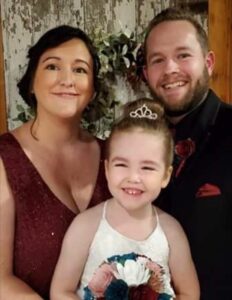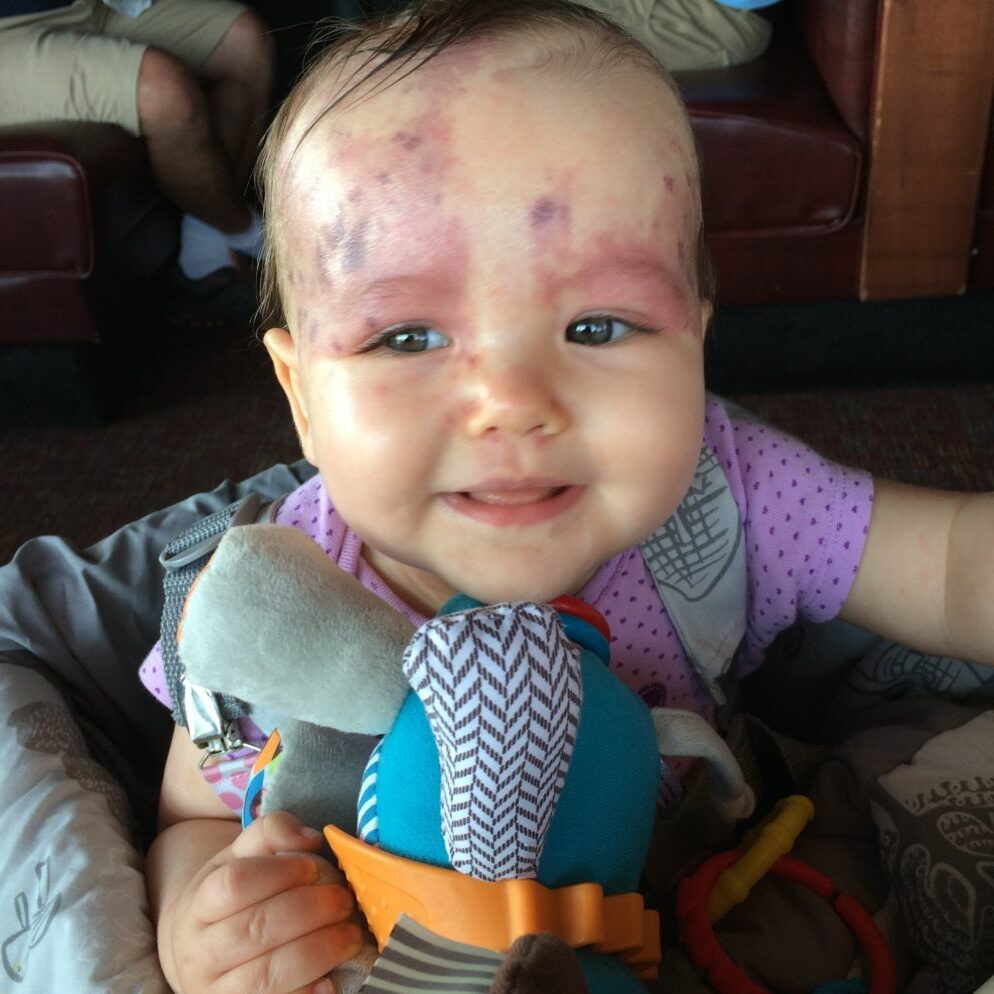A recent trailblazing study showed promising results for delaying and preventing seizures in children and infants with Sturge-Weber Syndrome (SWS) thanks to a new pre-symptomatic treatment.
According to Dr. Anne Comi, children with the condition who have early seizures have the highest risk for poor outcomes neurologically. Comi is the director of the Hunter Nelson Sturge-Weber Center at Kennedy Krieger Institute and the co-principal investigator on the project alongside Dr. Yangming Ou of Boston Children’s Hospital.
Researchers at Kennedy Krieger and Boston Children’s discovered a new method for decreasing the likelihood of early seizures in infants with SWS. Their collaboration, which was funded by the National Institutes of Health (NIH), is the first of its kind focused on the rare condition.
What is Sturge-Weber Syndrome?
SWS is a vascular problem present at birth from a non-hereditary gene mutation which can manifest in the skin as a port-wine birthmark.
Also called port-wine stains, they appear as reddish-purplish discolorations and can indicate an increased risk of abnormal blood vessels in the eye and brain. Not every child with a port-wine birthmark on the face has brain involvement, but about 25% do, according to Comi. About three in every 1,000 babies have
port-wine birthmarks.
The absence of a port-wine birthmark does not guarantee a child won’t have SWS—about 10% of patients with SWS don’t—but these patients tend to present with seizures later in life and have better outcomes, Comi explains.
Babies with SWS can face seizure onset by 2 years of age.
“The seizures are hard to control, prolonged and often associated with neurologic decline, weakness or vision loss. [Patients with SWS] can have venous strokes, regress, become weak and they may or may not gain those back,” Comi says.
A venous stroke is a blood clot in one of the brain’s larger veins and accounts for less than 1% of strokes. In the case of a venous stroke, blood does not drain properly, so fresh, oxygenated blood cannot replace it, which damages the brain.
How will this study change treatment?
Until recently, the standard treatment for SWS did not begin until after seizure onset, and families have been unprepared. After seizure onset, treatment can involve multiple seizure medications. With the pre-symptomatic treatment, babies would be given a low dose of aspirin and just one seizure medication.
“Evidence from blood flow studies done in patients with Sturge-Weber Syndrome showed that prolonged seizures mean decreased blood flow to the brain. In most (non-SWS seizure) cases, seizures cause increased blood flow to both sides of the brain,” Comi explains.
SWS is most commonly diagnosed through an MRI with contrast, which helps to identify brain involvement. Comi advocates for imaging as soon as possible. “Feed, swaddle, scan,” she says.
Once a child is diagnosed, knowing they could have a seizure at any moment adds a new layer of stress to early parenthood.
“We were told it’s not ‘if,’ it’s ‘when’ these seizures are going to start,” says Doug Walters, whose daughter was diagnosed with SWS at 7 weeks old. “The first year, it’s hard to sit back and just enjoy the infancy and not worry about every movement,” adds his wife, Chrissy.
But their daughter, Quinnlyn, an 8-year-old from York, Pennsylvania, participated in Kennedy Krieger’s pre-symptomatic treatment program. Her parents say she has still not suffered seizure onset.
“It’s been eight years of as close to normalcy as you can get (with SWS),” her father says.
To other parents facing SWS, Chrissy Walters offers this advice: “Take it day by day,” she says. “The diagnosis doesn’t define the baby.”

What’s next?
Though the study at Kennedy Krieger showed promising results, Comi says more long-term studies are needed to look for biomarkers to predict outcomes and responses to treatment.
Comi hopes that there will eventually be an international effort to identify babies with SWS during the newborn period and refer them to the appropriate specialists.
“I would like parents to know that this is a rare disorder, so it’s important to advocate for their child,” Comi says. “It’s not uncommon for parents to be the ones who go online and find out about Sturge-Weber Syndrome and ask about what referrals or tests need to be done.”
As the technology for imaging improves, so does artificial intelligence. Ou, who works in the fetal-neonatal neuroimaging data science center at Boston Children’s, says the center’s medical staff have begun training AI tools with the data collected from past clinical care to find predictors of first seizure onset and better understand the impact of treating patients before symptoms appear.
By leveraging the data from two of the biggest centers in the country for SWS, Ou hopes to be able to use AI to discern the relationship between clinical variables and imaging and find more targeted treatments.
“The average clinical professional may only see three to five cases (of SWS),” Ou says. “AI can see hundreds of cases in half a day.”











